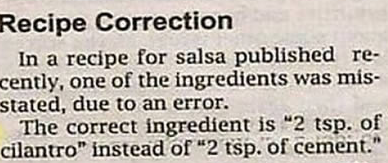5 Things you are Doing Wrong with Article Marketing

First, let’s dispel a common myth. Article marketing is not dead and probably will never be dead. I know that people claim its dead but what they actually refer to is article directory marketing which died years ago. The old thing, also called bum marketing involved creating links on various article directories for SEO purposes. That has not worked in at least six or seven years (an eternity in Internet terms).
Article marketing by comparison works by taking advantage of a decades old concept. It’s the thing that made the World Wide Web what it is today and the best part is that it is 100% completely and utterly Google proof. It doesn’t matter what Google does to their algorithms. You could even be delisted from Google and article marketing would still work wonders for your traffic numbers.
In essence, article marketing means getting articles placed on high profile websites with links back to your site. The idea is not to take advantage of the link juice from Google (though that can help) but instead to take advantage of good old fashioned clicking on a link from one site to another, bypassing Google completely. As I said, this technology has existed since the earliest days of the Web and it’s still a great way to get traffic.
The reason it works is simple: every website needs decent content and while it is best to have original content, it’s also very useful to get yourself a handful of extremely well written articles even if they are syndicated. Your local newspaper (if you still read one – if not, check a nationally known paper such as USA Today or the New York Times) uses a similar concept.
The majority of articles in a decent newspaper are by the staff of the paper. However, there will also be articles published in those newspapers by people who are affiliated with various news services such as Reuters or AP. These articles appear in more than one newspaper because they are provided by a service which sends out reporters and gives newspapers the right to republish their stories.
When you do article marketing, you provide an extremely high quality article to blogs and online newsletters which you agree to allow them to publish for free in exchange for including link back to your site. That’s the original purpose of article directories by the way and they have largely returned to that purpose in the wake of things like Hummingbird and Penguin/Panda.
So, with that introduction, here are the five things you are likely doing wrong with article marketing:
Sending Out Junk
I know and you know that it’s possible to buy an article on Fiverr. 500 words of somewhat passable ‘content’ which may even sound like something written by a native English speaker as opposed to a guy working in a third world country. There’s just one problem with this. Even if you do find someone willing to work for so little, you won’t get the quality you need in order to attract real, high quality sites with that kind of junk.
Think about it logically – if someone wants to earn even the minimum wage for writing your content, that means they need to pump out around 750 words per hour. Now I could do that and have done it in the past. However, what I can pump out that quickly is going to be whatever I can think of off the top of my head. It’s not going to be the kind of well researched, thought provoking article which is likely to get you links from well-known websites.
If you are determined to succeed with article marketing, bit the bullet and realize that you are not buying link fodder for some unknown blog but a high quality, well researched piece of writing. That means that you need to be willing to spend the money to hire a professional writer (and yes, that may mean spending $100-$500 or more for a single article) or learn to do it yourself.
A good article, the kind likely to get you a link from a major website is the kind which is thought provoking and which has some real, in depth journalism behind it. It should include at least one and likely several quotes from actual experts in the field that it’s written on and it should be the kind of thing that grabs your attention and keeps you interested throughout.
Expecting Instant Results
This is a common theme that I see from a wide number of people who spend a lot of money on a good article. They get the article –just one mind you—onto an article directory and expect instant traffic to pour into their sites. I’m sorry to tell you that article marketing works very much the way that SEO does. It’s a cumulative thing and it cannot be rushed.
In point of fact, article marketing can take as much as 4-6 months to show real results and it will only work if you consistently put high quality articles out there into the web. Remember that as with anything else, there is a great deal of competition and the major blogs and Ezines have plenty of choices of which article to actually publish. Thus you need to build yourself a reputation first.
Expect to invest in at least 2-4 articles per month and expect to spend some time or money as well getting it sent out to as many article directories as possible in order to ensure that it propagates properly. If you do this consistently, you should begin to see some serious results from your efforts but it will take time and is not instant.
Failing to Track Where Your Articles Ended Up
Article marketing is all about getting yourself mentioned in major blogs and e-zines. Unfortunately, they often will not let you know that they published your work or where they found your work initially. However, there is a simple trick to ensure that you know when you were published and another simple trick to know which directory they found you on.
First, pick a handful of key phrases from your articles and set up Google alerts for those phrases. It’s a good idea to pick at least 3-4 such phrases rather than just one because the websites which publish you may change the wording slightly in places. With the Google alerts, you will know when someone has picked up your work even if they don’t let you know.
The other advantage by the way is that you can go in and make sure that your links are actually appearing and have not been stripped before the articles are published on someone else’s website.
Now, another useful thing to do is to have some kind of subtle punctuation changes somewhere in the article for each time you upload to a directory. The nice thing about this is that it will let you know for certain which directory they found you on. This means that you can begin to focus on the directories which consistently get you results.
Plus, you should also contact the owners of the sites or e-zines that you get links from in order to offer them first dibs on any new articles that you publish. This will get you to the head of the line when it comes time to pick which articles make the cut and which ones do not. In fact, the people who do the best with article marketing often do this exclusively, ignoring the directories completely because they get to control which sites use their content, making sure that only the best get their stuff.
By the way, you can also use Google Analytics to track where your incoming visitors are coming from, further enhancing your ability to keep track of these things (important when you consider that your articles may appear on E-zines which don’t get indexed by Google and therefore wouldn’t show in a Google Alert).
Failure to Check Your Spelling and Grammar
Want to sink your brand spanking new article marketing campaign super fast? Just make sure that the spelling and grammar in your work is atrocious. Even if you hired a professional writer and paid them a great deal of money to write an article for you, it’s worth your while (all the more so considering you spent a lot of money on it) to check the content produced yourself. Even a pro can make mistakes and there is nothing like a second pair of eyes to catch them.

One great technique I’ve used on many occasions is to read the article out loud. For whatever reason, doing so forces you to notice mistakes that your brain would otherwise miss.
Failing to Track Your Numbers
Finally, whenever you start to work on any new kind of traffic strategy, it’s important to ensure that you have a way to track whether it’s working or not. Spend some time looking through your Google Analytics information and find out what your numbers are right now. Then, keep tracking this over a course of around six months or so and see whether or not the article marketing has actually made a real difference or not.


